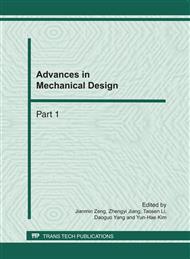p.1663
p.1667
p.1671
p.1676
p.1680
p.1684
p.1693
p.1697
p.1707
The Team-individual Approach for Curriculum Design Course in the Mechanical Engineering Education
Abstract:
The team-individual approach is proposed to act as the teaching method for the curriculum design course in the mechanical engineering education. Firstly, the paper describes the contradictions of the cultivation and requirements for the students between universities and enterprises. Namely, the individual education in the universities is very different with the team spirit with widely recommendations of most modern enterprises. We elucidate the similar feature between team spirit and individual education that is extreme stimulation of the maximum personal intrinsic potential for helping success in their career. Therefore, team-individual teaching method emphasizes on the integration of team-spirit and individual education, by which teacher not only provide the platform for students to arouse their initiative for independent learning and thought but also range their behaviors to enclose the objective of their associated team. In addition, teachers should assess the students based on their work by the oral examination in the limited time and offer the score on the spot and expose it to all the students, which play a vital role on the stimulation for the students. The experimental results in our university show the validation and effectiveness by the team-individual teaching method for the curriculum design course in the mechanical engineering education. Furthermore, team-individual teaching method is also supposed to have the high effective function for the other engineering educations.
Info:
Periodical:
Pages:
1680-1683
Citation:
Online since:
February 2011
Authors:
Price:
Сopyright:
© 2011 Trans Tech Publications Ltd. All Rights Reserved
Share:
Citation:


